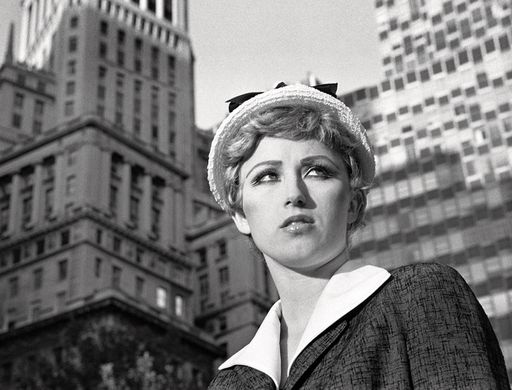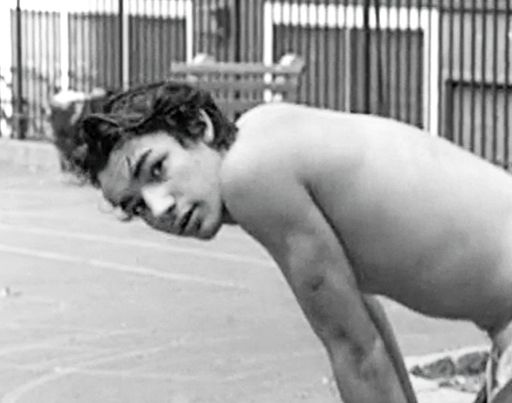James Franco has famously resisted being identified as merely an actor, pursuing a simultaneous life in the art world — making videos of dollhouses split in half, painting fat pets, and restaging Cindy Sherman’s iconic 1977–1980 “Untitled Film Stills,” with Franco himself standing in for Sherman, who was (in her own version) standing in for a variety of actresses in B-movies. New York art critic Jerry Saltz called the works in that 2014 show at the Pace Gallery, Franco’s most high-profile in New York, “silly self-obsessed demi-drag re-creations,” and wrote that “at this point George W. Bush is actually a better artist than James Franco.” The New York Times pleaded, “Someone or something, make him stop” — in a review written by Saltz’s wife, co–chief art critic Roberta Smith. In almost four hours of conversation in Los Angeles this winter, the artist and critic met and talked honestly about why the art world has been so hostile to Franco and other celebrities who try to enter it — and what drives Franco to continue, hostility be damned.
James Franco: Okay, this is your first interview?
Jerry Saltz: It’s my first interview.
Ever?
I never do them. I only sit back in my apartment and write things about all of you.
People get weird when actors go into the art world. They get weird when actors go into politics. Not that it keeps actors from doing it, or running for president.
What do you think that is about? My sense is the art world polices its boundaries very, very intensely — that it’s extremely picky, if not cynical, and I have to include myself in that sometimes.
I think you should. I think you’re one of the biggest police officers.
Okay, but we’ll get to me. What is it about the art world? What’s the problem for us?
Well, it’s something that I’ve thought about a lot. I totally believe that criticizing art comes from a love of art. But there is a prejudice against me, right?
Yes.
Why?
John Waters once used an expression, “the curse of fame.” It’s impossible not to have your audience see one set of work through the lens of the other.
I think it’s really hard, not only from the audience but also from critics.
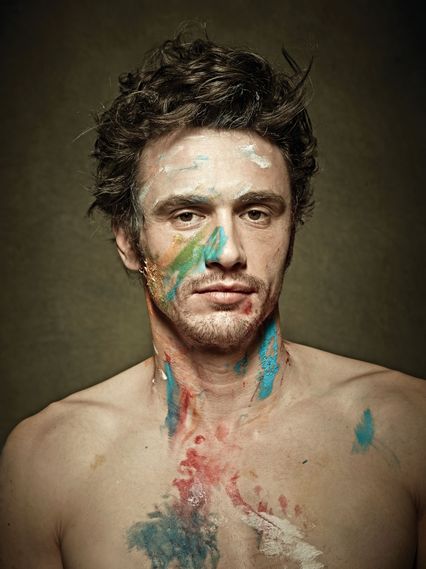
Most of the people anywhere else would say, “Well, damn right, you cannot escape it.” Women talk about this. People of color talk about it. They say no matter what I do, I’m being read through a series of lenses.
And I understand. I know just from my own reaction to celebrities doing certain things — that it’s so fucking annoying, and it is repellent in a lot of ways, and it’s just gross a lot of times. But I’ve done everything that I can to respect these professions that I’m interested in. I’ve gone to all these schools. I went to the art school that so many of my favorite artists have gone to. But when an actor goes into music, when an actor writes a book, when an actor goes into the art world — before it even is made, people are considering it bad.
But what is the allure of stepping into the art world?
It’s the freedom of making something that doesn’t need to entertain, that isn’t going to be tallied up in the box-office tolls. And it’s something that, frankly, I’ve done longer than I’ve been making films. My public life and my professional life started in film, and so that’s what I’m known as. But there’s the making of the work, and then there’s the showing of the work.
The art and “the art world.”
I’ve read the thing that you wrote about celebrities going to the art world— you talked about seeking a certain credibility that maybe we don’t get in our own professions. There was also an interesting idea you had in there that the celebrity persona shrinks the closer it gets to the art world.
Celebrity nowadays is built on the idea of mass reproduction. We are put in front of these cameras and projected around the whole world. The art world is smaller. You have to go into the temple — you have to go into the gallery and be in the presence of it. Yes, we can put it across on Instagram or whatever, but it’s not the way that the art world works, at least right now. There are still temples — the museum, the galleries. When celebrities go into that world, they are shrinking. On the other hand, people can’t help but comment about it endlessly.
The art and “the art world.”
I’ve read the thing that you wrote about celebrities going to the art world2— you talked about seeking a certain credibility that maybe we don’t get in our own professions. There was also an interesting idea you had in there that the celebrity persona shrinks the closer it gets to the art world.
Celebrity nowadays is built on the idea of mass reproduction. We are put in front of these cameras and projected around the whole world. The art world is smaller. You have to go into the temple — you have to go into the gallery and be in the presence of it. Yes, we can put it across on Instagram or whatever, but it’s not the way that the art world works, at least right now. There are still temples — the museum, the galleries. When celebrities go into that world, they are shrinking. On the other hand, people can’t help but comment about it endlessly.
The celebrity still gets in front.
From my perspective, that’s a little unfair, because contemporary artists—since [John] Baldessari was teaching at CalArts — have practiced in many different mediums, and it’s not as strange for a painter to suddenly make a video than it is for an actor to go make a painting.
Except — a lot of artists make videos, but very few have made films. Fewer still have made good ones. There’s Schnabel. There’s Salle. There’s Longo.
Sherman.
There’s Sherman.
And Steve McQueen. He’s the most successful.
Major. That’s an Academy Award winner.
Pipilotti Rist made a movie.
She did?
Yeah.
I love her work.
And people don’t know. See? I mean, to be fair, it doesn’t work …
But we let artists do that.
I read Roberta’s review of Cindy’s movie.
She said it was shit.
Although she spent half of the review praising her artwork.
I know. We have to do that.
Where’s the half of my review where she praises my acting?
You’re attacked just for coming in. You’re attacked the minute you walk in the door before your art even gets seen.
Why?
The art world is an all-volunteer army, and we all come here naked. We all have similar needs. I have no choice — I have no other hope. But you? You have all these other outlets, and yet you’re trying. And it’s almost impossible without your fame becoming the content.
If I really assess what I’m doing, that might be one of my problems. Meaning, I’ll get a lot of shit, and it hurts to get criticized, but I also know I always have the film world to fall back on.
You love acting, and it loves you.
But one of the reasons that I went back to school — and then many schools — was that when I only had acting, I felt trapped.
I think you still feel trapped.
I think that’s how a lot of people feel in a lot of professions. When I went to Yale for my Ph.D. in literature, I had fellow students — great students, writing incredible papers — come up to me and say, “I’m so jealous of you. I’m writing this paper. If I get it published, 50 people will read it.”
At most. In a lifetime.
But they say, “You can go and do something, and millions of people will watch it.”
I sat in class [Saltz was auditing a course] next to you without knowing it.
That’s when I was at Columbia. Richard Howard.
All these women came up to me, and I thought they were attracted to me, this older man. One of the last days of class, they said, “What was that like to sit next to James Franco?” And I said, “What?” But you’re really going to these schools, and you’re really getting the degrees.
I went for years.
You’ve got four degrees or something?
I have more degrees than that, but yeah.
How many do you have?
It sounds sort of stupid when I say it.
Okay, don’t say it.
But it was an awakening, having these great teachers.
I was sitting there going, “I wish he would explain more” — Richard Howard, the genius of his generation.
Not just that class — and yeah, he wasn’t my favorite teacher. But in the writing world, even the best novelists and poets teach. It’s akin to being directed by Gus Van Sant or Danny Boyle, having that person as a teacher, critiquing the work.
Doing these other things was a release, and I think it made me a better actor. Because when I was only acting, I was trying to do all of these things as an actor. I was on my own mission. I was acting for myself — to do a great performance for me, not for the movie. But that’s not my job as an actor. My job as an actor is to help the director achieve his or her vision. As soon as I got to direct my own films or escape the film world and into these other realms, when I came back to the film world, I could be pure about it. I don’t think my performance in Spring Breakers could’ve happened if I didn’t do all this other stuff.
I loved that movie.
I couldn’t have lent myself to that if I didn’t have the release in these other areas. Because if I was only an actor, then all I have are my performances, and so I’m going to be so much more protective and defensive of my performances. But when I have my own movies, my own work that I get to control, then I can say, “Oh, you want me to go crazy in that room? You want me to have cornrows and gold teeth and look like a freak? All right. It’s your movie. I’m game.”
Part of the price I pay is the skepticism and the criticism. But I guess part of me also thinks, Well, I’ll keep making it, and you know what, what happens in 20 years, 30 years, 40 years, when a lot of people that are criticizing me are dead …
I’ll be dead.
I’ll still have the work. The body of work will be there. I’m not doing these things as a one-off. Cindy Sherman never directed another film. I’ve made art for decades.
Do you think other people around you that you know in the movie world feel trapped by this industry?
Yes.
That they have other arts inside of them that they can’t get out?
Yes.
Could you say more about that?
One of the things that I hope to do — I’m a teacher, I do talks at universities, I do all these things. And I hope that I inspire people to be beginners, to try things, and to not be shut down before they even investigate because of fear, fear of criticism, fear of failure. I think that I’m a good example of that.
Now, sometimes, sadly, people will follow my example or will do things with me, and it won’t go so well for them. When Anne Hathaway decided to host the Oscars with me … She had said no before, and then they asked me to ask her, and I said, “Let’s just do it. It’ll be an adventure,” and then we got a lot of shit for it.
Both of you?
I probably got more than she did, but she got a lot.
What was so bad about it?
You know, I think one of the things that happens in film and television and performance-based things is that people will criticize the performers because they’re the face of the piece. We didn’t write the script.
No. You deliver it. But that’s true every year, the critics would say, right?
In other cases, someone like Steve Martin or Chris Rock will probably have a bigger hand in the writing of the thing, but Anne and I did not.
One of the reasons I bring this up is before then I also did this thing where I went onto a soap opera, General Hospital. It started as just an experiment because I was doing another art movie. I was going to play a character that was a soap-opera actor, and I thought, What if I actually am on a soap opera? And so I asked them, and they were overjoyed for me to come on, because, normally, the trajectory for an actor is to start in soap opera, and then if you can get away from it, you don’t go back. So they said, “Do you want to write for it? Do you want to create your character?” I said, “No, all I ask is that you make him an artist and you make him crazy, and otherwise, I want to be delivered into your hands.”
So they came up with this idea that he would be called Franco. It was a General Hospitalversion of an artist. All the clichés. He starts as a graffiti artist, and then he’s a performance artist that also is a murderer, and that art reveals the crimes he’s committed, but it was great because it was seen through the lens of General Hospital.
It was already aware of itself and how ironic it was, with the added effect that I’m an outsider on there. People know I don’t belong there, and then it’s also being highlighted even more because my character is called Franco. So you can’t escape the fact that I’m this rupture in the whole thing.
And this is around the time of the Academy Awards?
Then I got nominated for an Oscar, and then I was the host, and then I went back on General Hospital, and so it made it even more of a rupture. A bit before that, there was one of the MoCA galas. A lot of artists were coming up to me.
They loved it?
I remember [the painter] Mark Bradford saying, “I wish I had a forum like that.” I thought, Cool. I think this is cool. I want to take a little bit more ownership of this, and so I started talking to Jeffrey Deitch about doing some sort of performance. We would fly out the General Hospital actors and shoot an episode at his gallery as this ouroboros where my character was having a show.
Which is like your work in general: many layers of self.
But the art world doesn’t quite work the same way as the film world.
Your earnestness comes through as irony, is what I think may be happening. But do you regret the Oscars?
I wasn’t trying to turn the soap opera into something of my own making. I was in their hands. When I was asked to do the Oscars, I thought I’ll do the same thing. Nobody expects me to host the Oscars.
So I thought, here’s, again, an opportunity to put myself in their hands, but I’ve never aspired to be the Oscars host. I don’t care really. I’m going to do what they ask me to and do it as well as I can, but I don’t need this to be the best Oscars ever. I’m not getting anything out of that. In the best-case scenario, even if I killed it, it’s not going to help my career, because that’s not what it’s based on. It was an experiment.
But I think similar to what happened with the Cindy Sherman show — hosting the Oscars is a whole different thing than going onto a soap opera. Nobody cares if you disrupt a soap opera, but if you go and host the Oscars and they get even an inkling of you trying to subvert it in any way or punk it in any way, people are going to get pissed.
Let’s talk about that Cindy Sherman show.
Okay. But let’s back up first. If it doesn’t bore you, I’d like to talk about my history.
You want to start there?
We can just touch on it for a second. I dropped out after my freshman year at UCLA, went to acting school, became an actor, and then I went back as a literature major. I was about 27. I studied with Russell Ferguson, who was the head of the art program. But I was scared, you know? I knew that there would be a lot of skepticism. So one thing that I did in those early pieces — I was making video art. I thought, People are going to be mad if I start doing paintings.
Because painting is the most protected of all? Is that the idea?
I think you even said in that article about celebrity artists that they all seem to be doing painting. That that’s the go-to thing. It felt to me like, well, I don’t want to be that, whatever that cliché actor-moonlighting-as-an-artist kind of thing is. I thought one thing that I know is filmmaking and video.
But movies, especially commercial movies, are a particular thing. They’re narrative-based. There are tacit expectations from an audience of a movie. A certain length. There’s a certain amount of entertainment that’s expected. I thought here is a way to use this medium that I’m very familiar with, and here’s a realm where the expectations are different. I don’t need to entertain in the same way. But I was scared to mix my film life and my new burgeoning art life.
Scared to mix the film and the art?
I didn’t put myself in the videos because I thought, Oh, people will read it as me playing a character. Instead I made videos of toy houses being destroyed.
Exploding over and over.
Somebody’s chopping them. One of the ideas was we’re so used to violence in films. Terminator 2, they go and blow up a whole office building, and it’s spectacular. I thought one of the things I can play around with is size — that it might jar something in the way that we read these images.
Every artist makes rules — I’ll only use rulers, or I won’t use the camera. One of your rules, unconsciously or consciously, was “I’m not going to be an actor, a star, in these videos”?
Yes, early on. Because I had this feeling like, Oh, I should keep these worlds separate.The same thing when I wrote my book. I thought, Oh, I don’t dare write about the movie industry or anything like that. James Franco, artist, is different from James Franco, actor. Then I realized there’s no way, so I’ll try to harness that and use that content as material.
How did that transition happen?
I went to RISD, and when I was there, I realized that so many of my favorite artists — Douglas Gordon, Paul McCarthy, Cindy Sherman — were, a lot of the time, making work that was incorporating aspects of the film world.
But none of them were in the film world. They’re all starting in the art world, and they’re looking at the film world and pulling things from it — Douglas is pulling Hitchcock’s Psycho and stretching it out to 24 hours, Cindy’s redoing these stills that are inspired by B-movies and whatnot, foreign film. I thought, What’s the one thing that I have that they don’t have? I’m an insider in the film world. If I can have one foot in this other world and one foot here, it’s a privileged position that nobody else has.
You’re not a celebrity artist in my eyes, you’re actually an artist. But I think of you as an outsider artist.
After RISD, I was asked to do an art film with this artist named Carter.
Great artist — he’s shown at White Columns.
He’s a painter, and does some video. His idea was to do a film that was inspired by Rauschenberg’s Erased de Kooning Drawing. This would be an erased performance, and so he came to me and said I want to film you, and you’ll do a full performance, like a feature-length performance, in your head, but only 5 or 10 percent will come to the surface. We ended up allowing about 50 percent to come to the surface. So that meant that we actually had to have material that I was performing, and so he went through all of my films and started culling different scenes, but of a particular order. Weird scenes. So scenes where I’m talking on a telephone, which is usually expository. Scenes of me walking, walking through doors, eating. I was reenacting scenes from my previous work — suddenly, here I was in an art film using the material of my movie persona as material for the art piece.
And that opened my eyes. I thought, this is powerful. Other people, other outlets, use me, use my persona, use my image for their work. Why can’t I?
Is that where the Cindy Sherman film stills come in?
That’s part of it.
So, here’s one of the art world’s most beloved artists. A lot of artists have worked on their own version of “Film Stills.” It’s not that unusual.
I think you said it even more harshly.
You really reread this stuff. But it is true.
I imagine you saw a lot of art students doing it.
I did, and I said so.
Somebody did it with a dog.
All of it’s interesting because the original source material is so rich. But you did it, and people really blanched. I wonder, would I have blanched that way if you had just been some guy from UCLA?
Let me ask you, do you think, because she is a god in the art world, that that contributed to the reaction? That my work was seen as some sort of critique or criticism of her? What was a little frustrating was that it was misread that way — she’s one of my favorite artists. But maybe I should’ve heeded the warning and just not even stepped onto that land mine.
Let me answer your questions. One, had you, say, riffed on Jeff Koons — an artist people love to hate — it might’ve been different. Successful male artists are easy to hate — the art world loves devouring itself. When I as a straight man say anything about women, I have a lot of trouble. And with Cindy, you walked right into the very heart of feminism.
But had your show not been at a megagallery, had it not been at Pace … I wonder if it might’ve been different at White Columns or Gavin Brown. Those guys, with their credibility, saying, “Hey, fuck you, man. I like this guy, his film stills.”
Kim Gordon showed at White Columns.
Well, we’re going to like her.
Yeah. She’s got cred.
She’s been allowed to cross over even when her work isn’t good. She’s been allowed to make Zombie Formalism and not be called out.
Yeah, and why do you think?
God, you’re just making me want to cry. Because she comes always from the art world. She’s always been of it. The band, the persona. Every ounce of her. She is a rare exception, though. John Waters, same thing. We don’t call him out for sometimes being a weaker conceptual artist or derivative.
So what happened with me?
I think you put yourself in a quadruple crosshairs. You’re a “celebrity.” You’re a man. You’re dealing with Cindy Sherman, of all people. And then you’re at the weirdest of all the mega-galleries.
I totally agree. I totally agree.
And I’m not saying to any young artists don’t show at Pace. I always say show anywhere you can get a fucking show. But is that a misstep?
It was, but here’s the thing. I didn’t pay off Pace to show me. I didn’t pay Gagosian to show me. But, yes. That was a setup. And that acceptance sort of chilled a little bit when you said about the Pace show, “Wow, I hope the other Pace artists don’t quit.”
I did think that.
Arne Glimcher quickly said we’re not doing any more Franco shows.
No, he never did that.
I’m sure he fucking did.
Well, if he said we’re not doing any more Franco shows because of something some geezer critic like me wrote, then he wasn’t serious about it. Nothing could deter Arne Glimcher. Nothing, if he felt passionately.
But it was already a risk for them to bring me in. They made themselves vulnerable showing me, and so when they were called on that, I think they got really scared and embarrassed.
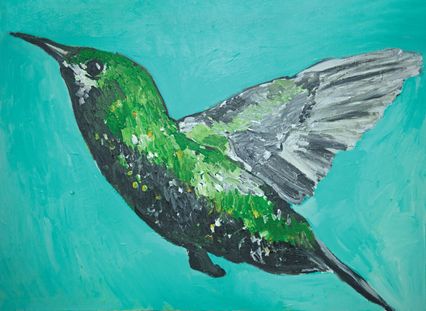
Then they shouldn’t be in this business, the business of taking that risk. I would argue that Gavin Brown and other galleries have taken that risk, been criticized, and been fine with it. I don’t care who it is, if any collector goes off of you because of Jerry or somebody, I think that’s bullshit.
Really?
Total bullshit.
Don’t you know that people read you and Roberta and take it seriously?
I think that critics earn credibility, not power. If I stop a collector from buying Dan Colen’s work because I didn’t like it, I would say to Dan: You were one lucky motherfucker, because the guy that was going to buy your work, he wasn’t serious about it anyway if some geezer critic could stop him. I love Abba. I love bad artists, and I’ve written they’re great, and it doesn’t do anything for their career. Nothing. And for you to think that I can hurt your career, my argument is it won’t hurt it at all. You think I’m insane.
I think you are insane, because people — that’s all they talk about, the reviews you guys write. And I would argue — and maybe I’m wrong, or maybe I’m misguided — but the one thing about all those students’ re-creations of Cindy’s film stills, the one thing that they don’t have is an actual actor in them. Now, I know that that is one of the things that Roberta criticized, that Cindy is disappearing into these photos, and here I am ineluctably in your face.
Let’s talk about what you’re putting out there. You’ve said you’re gay in your work. In a way, I think, in my work, I’m sometimes assholish, and a few other things like that — hysterical.
It’s a little bit of a persona.
But if I’m to be honest, my second self is also real. So if you said, “I’m gay in my work,” I guess that must mean that you’re also gay. If I’m an asshole in my work, I’m also an asshole. A lot of gay men have said to me, well, Franco’s kind of a gay cock tease.
Yeah.
And you do say you’re gay in your work.
There is a bit of overfocusing on my sexuality, both by the straight press and the gay press, and so the first question is why do they care? Well, because I’m a celebrity, so I guess they care who I’m having sex with. But if your definition of gay and straight is who I sleep with, then I guess you could say I’m a gay cock tease. It’s where my allegiance lies, where my sensibilities lie, how I define myself. Yeah, I’m a little gay, and there’s a gay James.
Nobody says, well, I wonder who Cindy Sherman is sleeping with. Boys? Girls? Everyone? So, yes, you were in the middle of the Cindy Sherman film stills. Perhaps, had you been a gay woman, it might not have made the art world as crazy. That is the policing period we seem to live in. Which brings us to social media. I’m big in my teeny world. You’re big in a bigger world. Are you still on Instagram or not?
Yeah, @jamesfrancotv. I never left.
Shit. Do I not follow you, or did you block me?
I actually don’t do the blocking. You know how seductive Instagram can be? I don’t really trust myself anymore, so when I want to post something, it goes through an assistant as a kind of filter. If you’re blocked, it’s one of my assistants blocking.
But how does social media work for somebody who’s already socially visible like you? It gives me a lot of erotic momentary pleasure to enter the land of likes — I post a stupid picture, I look at it an hour later with all the likes, and I’m a happier man. How does it work for you? Because you’re one of the best.
I don’t think I’m one of the best. There’s good, and then there’s popular.
Okay. Who would be good?
I think Richard Prince and [the painter] Mark Grotjahn are great.
Grotjahn sometimes will post 50 pictures in a row, like fuck you, fuck you, fuck you.
But they both curate their pages — they’ll take stuff off. Taylor Swift — certain performers, in my opinion, post very kind of PG content. Appealing content, but nothing controversial.
So what about you? Are you using it as much?
I only do one a day. You do more.
I’m sorry, I do. I have a need.
I’ve found that if I post too many, people get a little upset. “Clogging my feed, man.”
Since I’m blocked, what kind of pictures are you generally posting now?
It’s sort of a similar concept to the way I try to run my film career and even maybe my art career — meaning I believe that there is actually something good about balance. Now, I know there’s been a lot of criticism of my artwork, but I still think that there is something interesting about me being, like you said, an outsider.
That’s content. No matter what you do, James Franco is the content of the work. It’s who did it.
In the film world, there’s the old saying, “One for you, one for them.” That if you do something that’s commercially successful, it’ll afford you more space for your artistic endeavors. In Instagram, I know what people like. With me, they want to see my face. That’s what teenage girls want.
And you like showing the thing we call the face?
Do I like it?
Yeah, I’m asking you.
I don’t love it.
I like showing the things I show — medieval illuminated manuscripts, T&A, dicks.
Well, I would say that’s one of your strengths. People like to hear what you say about art, but also you’re funny. That’s what they want from you. One of the things that they want from me is my face, but that doesn’t mean that I like doing that.
What would you then want to post? None of us are going to post naked pictures, but what would you want to post if it wasn’t the face?
I wish I could post things about art, and I do to a certain extent. But I balance it out. If there’s an article I’ve written for Indiewire, I’ll say, “Go look at this.” But those get a fraction of the likes as a picture of my face does.
I think you think of yourself more as an outsider, and I think that all of us think of ourselves as that way. I like to call myself an outsider critic. But let me ask you — what’s my role as a critic? What should I do then when I confront your work?
I guess what I wish is that at least you could look past the lens of me as an actor a little bit. But I also know that it’s sort of impossible and that I’m also making it hard for you to look past that because …
You’re in the middle of it.
But actually, you’ve written very well about the idea of celebrity as content. Is that worthy material, or a dead end?
I think I wrote that celebrity is an essence that is a content more prevalent today in art than ever, and so I think people like Kim, Kanye, Miley, or you — to watch you guys trying to manipulate that, to mold it, is not a dead end to me. But when I see anything, I’m thinking, Where is the person’s own radical vulnerability in this? I had a problem with your work because what I was reading into it was something scattered, not focused. I could not see this person. I don’t want art to all be consistent and all look the same. I hate product art, and you don’t make product art. Amen. But sometimes when everybody’s doing everything all at once, it comes off as not doing anything at all.
But I also don’t believe that there isn’t value in, whatever you want to call it, amateur work.
Duchamp played chess.
Steve McQueen makes great movies. But on a certain level, people will compare me to Shia LaBeouf [who has tried to rebrand himself as a performance artist].
I don’t think there’s any similarity. Although you call him an artist, somebody like me, who doesn’t really know his real work, his acting, to me, that isn’t art. It’s bad art that may be not even art.
I don’t know if I called him an artist. What I was trying to get at was that I was just trying to identify what was maybe going on with him, which was something that I could relate to. Not to his work, but the experience he had. A male actor in his late 20s who’s feeling like his career is out of his hands. Here he is doing these Transformers films that make his career, but he’s feeling like, Oh, I don’t have credibility, and I’m part of this machine.
So he wanted freedom, and he made art.
He also got caught up because he made this short film, and he took material from a comic book without giving credit to the original artist.
I didn’t even know this.
But again, it’s a tricky thing where it’s like, well, Duchamp can go and use the Mona Lisa. It’s fine, but if you’re the big fish and you’re taking from the little fish …
It’s a problem.
It’s a problem. But what about … what is it, Art F City? And ArtNet. They seem to be particularly nasty.
I think that blogs are another matter. But for me, being critical of art is a way of showing it respect. I’m not trying to keep you out, but I will admit that critics take a shot at anybody who comes in the art world. Look at Jay Z.
But it doesn’t seem like he’s going to do another one of those.
And everybody shit on it. I danced with him and of course fell in love with him, and then I was shit on too. I always said I would sleep with him one night for sure, and I did fall in love.
I think you fell in love partly because it was Jay Z. If that was somebody else just doing it, dancing in the gallery …
I would just say it’s another bad Marina Abramovic piece. But I don’t want to be a gatekeeper. I just want to be a good goalie — to make sure it’s got to be pretty good if it gets by me.
So then tell me about this. You tried a TV show, Work of Art, because you wanted to explore what it would be like to have criticism reach a larger audience. You knew that there would probably be a lot of skepticism, but it was worth it to you to try.
My God.
It’s in all your bios.
Every one. They hate me.
You got a lot of shit for that. But you’re also in a position at New York Magazine where you’re not going to lose your job over that. If people in the art world hate you, New YorkMagazine isn’t going to fire you. When I go and try certain things, when I, whatever, dance naked in public or just try something, sometimes I can fall flat, and it doesn’t hurt my movie career. When I was asked to host the Oscars and it falls flat …
Did that affect your movie career?
I think a little bit. I mean, I did fine.
Here’s what happened to me. Everybody said I was bringing about the end of the art world, the same way, actually, they say you were bringing about the faster demise of the art world. I felt depressed about it. It hurt my feelings. I was paid $900 per episode, which — I thought I was going to make more, but when they told me what I was going to be paid, I still knew I was going to do it. I was being driven to do this simple thing in my mind, which was to try to take criticism to a huge number of people.
But when Klaus tried to bring in Björk to MoMA …
True, I did not have a very accepting response.
Now, granted, I think the Björk show wasn’t successful. That he didn’t even pull off what he was trying to do. That the space was cramped, and that the way he tried to make it mostly aural didn’t come off. It just came off like a fancy sort of audio guide. But he was trying something — how do we bring music in the museum? And for that, you started calling for his job. To me — criticize the show for not being successful for all of its faults, but if curators and artists are going to be shut down for trying something, then what are we going to get?
I agree. However, I did not call for his job. I was really specific. And I have no problem with Pop Art, pop music, anything at the Museum of Modern Art. I was very specific and said this show in this place done this way was a problem and done by this person. I said that Klaus has done great shows, and he has. He did the Wael Shawky show last year — it was fabulous.
You praised that as one of the best shows of the year, right? But then after praising it, at the end of the article, you then criticize Klaus again. It’s like, he does a good show, and you’re still going to criticize him?
I probably said, “Okay, great, do more of this. This is what you’re so good at.”
What you said was he’s not an intellectual.
He isn’t. He’s a great impresario. Now, I’m not an intellectual either. I have no degrees. You have, like, four or five. I’ve got none. But I wouldn’t say that Klaus is an intellectual, and neither would he. He would say he’s a producer.
It is not personal. I like him. I don’t want him gone from MoMA. I just think he would be really good if he could just fucking concentrate on one museum. PS1 is supersexy, anyway. What’s the problem, really? And he’d also done a whole series of bad shows — almost fiascos. It was time to call a spade a spade. If you saw a good friend of yours make ten shit films, you might tell your friend, “Listen, man, there’s a problem.”
Good. I’m glad we have that on the record.
The point for me is, if I’ve lost my credibility for that, then New York Magazine should fire me, which I told them many times. But can a celebrity win real credibility? Are there any examples in the art world of it happening?
John Waters, Harmony Korine.
I don’t think it’s common for people that don’t make art every day to really be good artists. I guess that’s what I think on some level, that it is a lifetime thing. It doesn’t mean you’re not allowed to make art, but it does mean that when I see these people’s art, I see certain things lacking.
When I did the Cindy Sherman show, Harmony said, basically, the exact same thing that you said to me. “Dude, don’t use Cindy Sherman. Don’t reference other art.”
Right. Make your own work. Make your own bad paintings.
Which started me on these really simple paintings — as simple as possible. I’m not going to Chelsea to show these. I’ll show these in Europe. Because I think it’s also particular to a person’s home — you can’t go home again or whatever. When I show in New York and L.A., the venom is particularly harsh. Javier Peres asked me to show in Berlin at Peres Projects and I can’t read German, but I’m told they were great reviews.
Well, that’s what they tell you. But when you were on Broadway, you did speak back to that theater critic.
Well, let’s talk about that real quick. They warned all of us, especially the actors that had never been on Broadway before, “Don’t read the reviews.” But in the theater world, criticism is different than the film world.
Yeah, it makes and breaks.
In the movie world, there is critical praise and then there is box-office success, and so you can sort of write off the critics and say, “So what? I’m still a success.” In the poetry world, there is …
There’s no success.
And so the infighting is so much more vicious than in the film world.
You’re kidding. Really?
Oh, yeah. In the film world, I hardly ever hear about filmmakers dissing other filmmakers. In the book world, you have writers reviewing other writers.
True.
With that play, we got all great reviews, except the New York Times’. It was one guy, and everybody else loved it, but when you do a movie or when you do an art show, all the work is done. You go and put the movie together, and then you put it out, and it’s in the theater. In the plays, you got to keep going up there, and so if you read the criticism, it’s in your head when you’re onstage. Like, Oh, he said I’m shouting too much. You have to work to get it out of your head, and so I think part of my response in speaking back to him was a way to exorcise that and also to protect my castmates.
How was that for you, then, to go after a critic? What was that experience like?
Partly also what I was responding to was that I knew he had an agenda, that, in the past, he has gone after Hollywood actors that have gone to Broadway. That’s his sacred space, that he’s policing Broadway. I felt, Dude, that’s unfair. This isn’t a vanity piece for me. I’m not even taking the glory role in this piece. Lennie is the role that the main actor in a company usually takes. And so I felt, This is unfair. I’m being judged not solely by the work. I’m being judged because of who I am.
Okay, and you said so.
I called him a little bitch, is what I called him.
So you misfired on one thing — the language.
I had a lot of people in the theater world say, “Wow, I’m glad that you did that.” I don’t know if that had an effect on the Tony nominations. My co-star got nominated. I didn’t get nominated. But it didn’t deter me. I’m going to go back to Broadway.
What you’re saying right now is interesting because a lot of well-known artists are saying, “I don’t want to show in New York because of the criticism.” I might argue, to sound like a complete asshole, that there’s only about three or four art critics in New York — I’m sorry, I hope I’m one — who are willing to write negative reviews. Most reviews are either descriptive or la-la-la happy.
Well, that’s the other artists. For me, I don’t think anybody’s afraid to write a bad review of my stuff.
True. How often do you make art?
Every day.
And what’s your studio practice like?
It depends on what I’m working on. I do have a production company, and so when we do make videos, I’m used to not doing one camera, one artist — I have a team that I collaborate with. If I travel, my team will come with me if we’re going to work on a particular project in addition to the movie that I’m doing. So I often will have productions that are happening, on the weekends or whatever that might be.
But you also make paintings, which don’t look like anybody makes it but you. I look at Koons’s work, and I know that a lot of people made it.
I just went to the Broad with an actress, and there was a [Jack] Goldstein painting, and it said on the little card that assistants painted most of his work. She thought that was horrible.
I hate that, but that’s the price of admission where the middle-class value of work and skill is still highly valued. So are you making your paintings?
I do a lot of them.
A lot?
I do have assistants.
What do they do? Do they paint them from your drawing?
Sometimes they’ll do drawings. Sometimes they’ll do underpaintings and I’ll paint over the top. Sometimes, if I want a particular thing, I’ll hire somebody that specializes in something. I did a series of fat animals.
I just saw some of it.
I asked a pet painter to do those paintings, and then I painted on top of them. With the film-still pieces, I had an assistant shoot me. I didn’t do it like Cindy.
You love collaboration.
I mean, I do love it, and it’s something that I’m used to. It’s also something that I’ve used to help me grow. I mean, as an actor, when you work with a great director, you become a better actor, and so when I got to work with my heroes, I think I became better. I think I learned something by working with them. Now, when I go upstairs and paint, it’s alone, and there’s something I get out of that, but I also believe nowadays, the idea of the individual genius — it’s kind of boring to me.
The concept of lone genius isn’t a dead concept. It just doesn’t interest you.
But one of the things that I thought was really interesting in Roberta’s review of Cindy’s movie — she pointed out Cindy is somebody that’s used to working alone, and she went into the film world, and now she has to collaborate.
In the art world, you’re alone. Gagosian cannot protect you; Pace cannot protect you. Sales cannot protect you.
I think you are more naked in the art world.
You’re out there on your own.
Exactly. Exactly.
This is totally you.
Exactly. And I want to get better.
*This article appears in the April 18, 2016 issue of New York Magazine.
 Franco as Alien in 2013’s Spring Breakers.
Franco as Alien in 2013’s Spring Breakers.
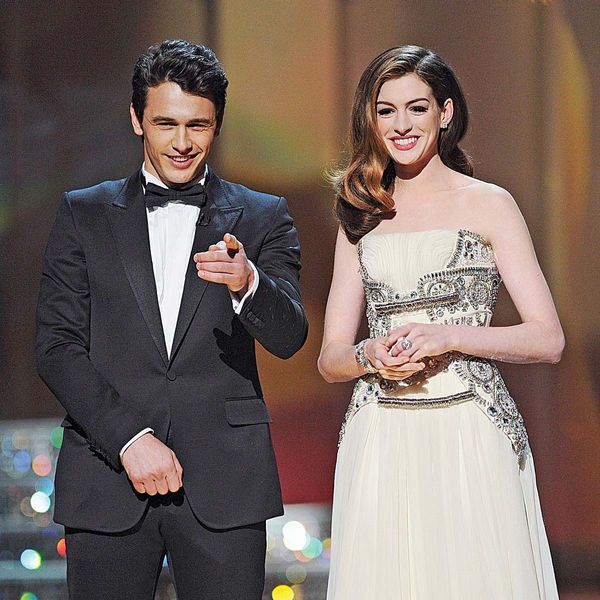 On The Tonight Showin 2014, Hathaway called hosting the Oscars with Franco her most embarrassing moment ever.
Saltz wrote, “It’s one of the most predictable holding patterns in all of art.”
A term for what Saltz describes as “look-alike art,” abstract and largely driven by the market.
On The Tonight Showin 2014, Hathaway called hosting the Oscars with Franco her most embarrassing moment ever.
Saltz wrote, “It’s one of the most predictable holding patterns in all of art.”
A term for what Saltz describes as “look-alike art,” abstract and largely driven by the market.
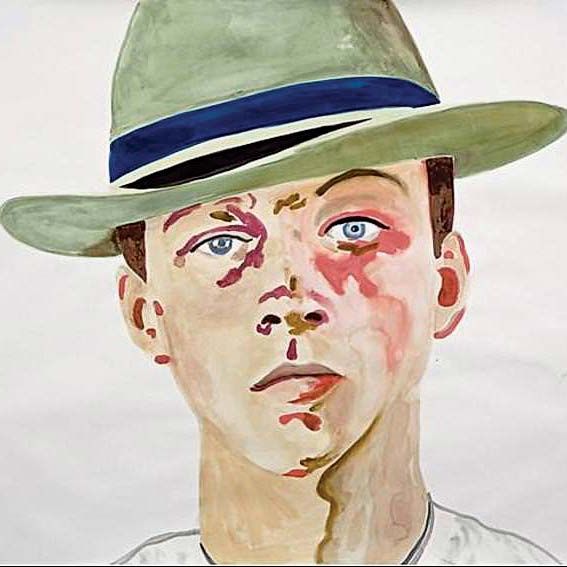 The Gagosian Gallery exhibited “Unfinished,” a collaboration between Franco and Milkdirector Gus Van Sant, in 2011.
The founder and chairman of the Pace Gallery.
In the March 2015 issue of FourTwoNinemagazine, “straight Franco” interviewed his alter ego, “gay Franco,” about why Franco has, for instance, starred in a reimagining of the controversial 1980 film Cruising.
The Gagosian Gallery exhibited “Unfinished,” a collaboration between Franco and Milkdirector Gus Van Sant, in 2011.
The founder and chairman of the Pace Gallery.
In the March 2015 issue of FourTwoNinemagazine, “straight Franco” interviewed his alter ego, “gay Franco,” about why Franco has, for instance, starred in a reimagining of the controversial 1980 film Cruising.
 In a music-video shoot inspired by Marina Abramovic’s The Artist Is Present, Jay Z performed his single “Picasso Baby” for six hours at the Pace Gallery in July 2013. He invited spectators to dance with him one on one.
Saltz was a judge on Bravo’s Work of Art: The Next Great Artist. The Project Runway–style art-competition show pitted emerging artists against each other for a $100,000 prize and a solo exhibition at the Brooklyn Museum.
In a music-video shoot inspired by Marina Abramovic’s The Artist Is Present, Jay Z performed his single “Picasso Baby” for six hours at the Pace Gallery in July 2013. He invited spectators to dance with him one on one.
Saltz was a judge on Bravo’s Work of Art: The Next Great Artist. The Project Runway–style art-competition show pitted emerging artists against each other for a $100,000 prize and a solo exhibition at the Brooklyn Museum.
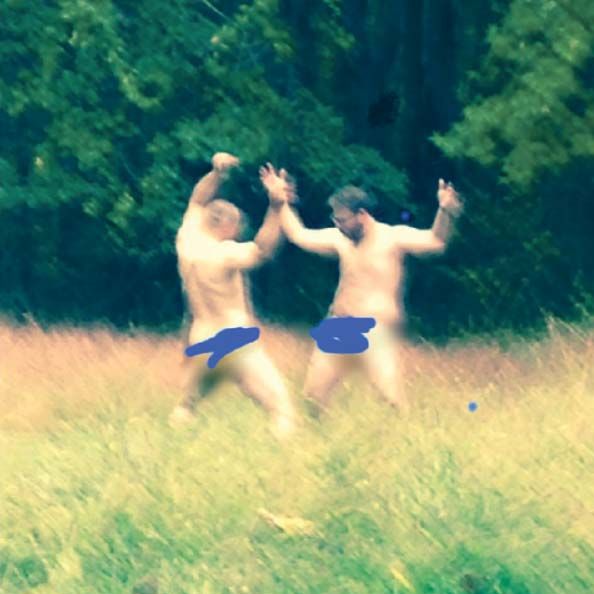 In October 2014, Franco posted a shot of himself and Seth Rogen dancing naked to tease an upcoming appearance on the Discovery Channel’s reality show Naked and Afraid.
Klaus Biesenbach, director of MoMA PS1 and chief curator-at-large at MoMA. The museum’s 2015 survey of Björk’s work was roundly reviled.
The Egyptian artist Wael Shawky’s video trilogy, Cabaret Crusades, was exhibited at MoMA PS1 last year. The films use marionettes to tell the story of the Crusades from an Arab perspective.
In his Of Mice and Men review, the New York Times’ chief theater critic, Ben Brantley, said, “Franco [as George] is often understated to the point of near invisibility.” Franco clapped back on Instagram by writing, “SADLY BEN BRANTLEY AND THE NYT HAVE EMBARASSED [sic] THEMSELVES. BRANTLEY IS SUCH A LITTLE BITCH HE SHOULD BE WORKING FOR GAWKER.COM INSTEAD OF THE PAPER OF RECORD.”
Franco’s exhibition “Fat Squirrel” at Siegfried Contemporary in London in late 2014 included paintings of a fat squirrel, a fat corgi, and a fat seal.
In October 2014, Franco posted a shot of himself and Seth Rogen dancing naked to tease an upcoming appearance on the Discovery Channel’s reality show Naked and Afraid.
Klaus Biesenbach, director of MoMA PS1 and chief curator-at-large at MoMA. The museum’s 2015 survey of Björk’s work was roundly reviled.
The Egyptian artist Wael Shawky’s video trilogy, Cabaret Crusades, was exhibited at MoMA PS1 last year. The films use marionettes to tell the story of the Crusades from an Arab perspective.
In his Of Mice and Men review, the New York Times’ chief theater critic, Ben Brantley, said, “Franco [as George] is often understated to the point of near invisibility.” Franco clapped back on Instagram by writing, “SADLY BEN BRANTLEY AND THE NYT HAVE EMBARASSED [sic] THEMSELVES. BRANTLEY IS SUCH A LITTLE BITCH HE SHOULD BE WORKING FOR GAWKER.COM INSTEAD OF THE PAPER OF RECORD.”
Franco’s exhibition “Fat Squirrel” at Siegfried Contemporary in London in late 2014 included paintings of a fat squirrel, a fat corgi, and a fat seal.
